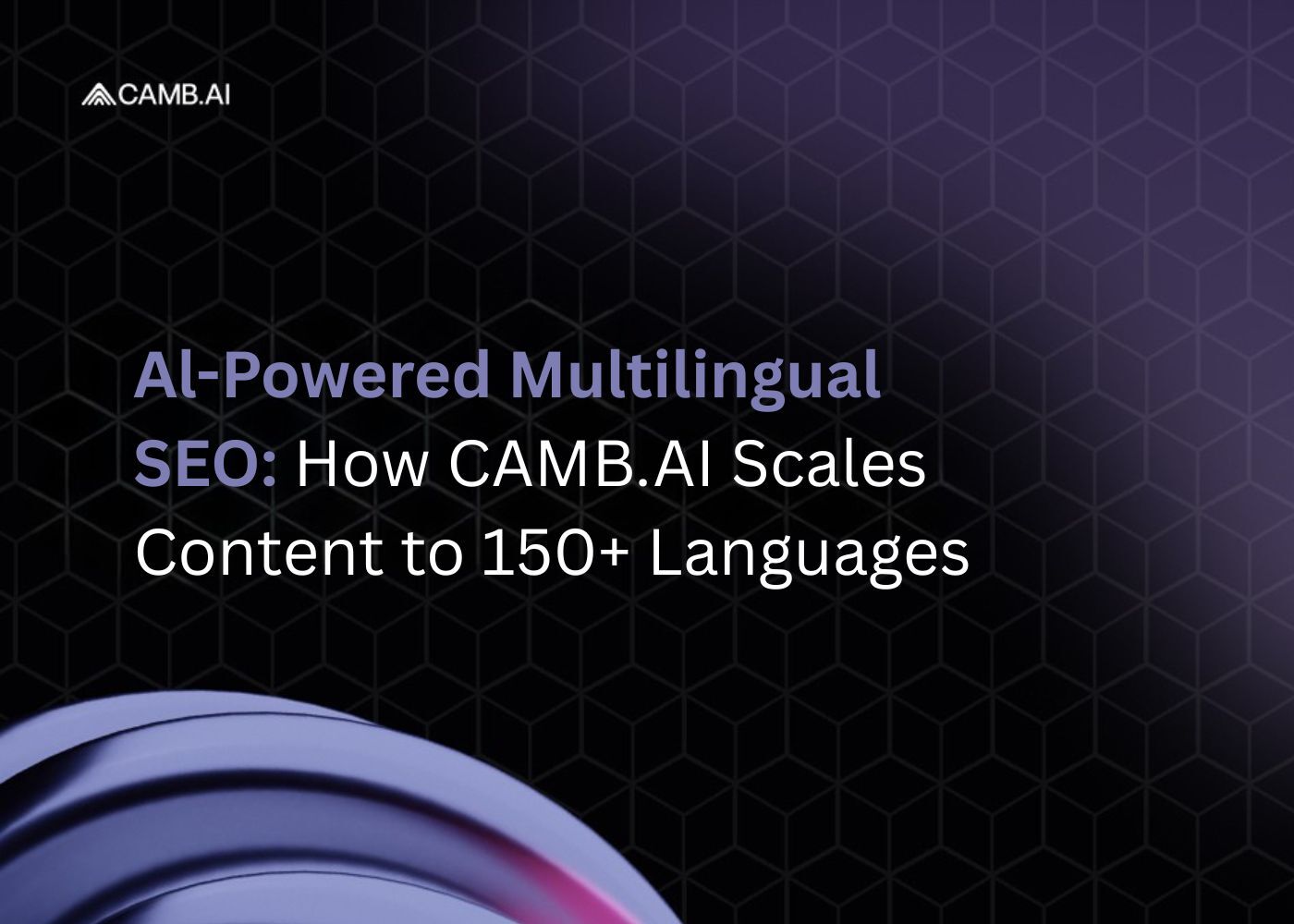文化放送「QloveR」で『立花慎之介 僕の声で。君の言葉で。』が●月●日(●)より日本語・英語・中国語+5か国語で視聴可能になります。

The internet is vast, but it is not equally accessible. More than half of the web’s top sites are written primarily in English, but English is only the native language of 7.3% of the world's population and less than 20% can speak the language. This leaves billions of people underserved. (source)
For years, businesses tried to bridge the gap with partial solutions: adding subtitles to video content, publishing one-off translated pages, or creating clunky region-specific microsites. These solutions were rarely SEO-friendly and often fragmented user experience.
Today, the expectation has changed. Following moves from platforms like YouTube and Meta to prioritize multilingual accessibility, audiences demand fully localized websites, not half measures. Search engines also favor complete localization strategies that use proper technical signals like hreflang.
This is where AI-powered multilingual SEO steps in. It combines scalable AI translation with SEO best practices (from a geographical perspective), allowing businesses to reach and retain audiences worldwide.
AI-powered multilingual SEO is the integration of artificial intelligence with global search optimization. It involves translating, localizing, and optimizing content for multiple markets simultaneously.
Unlike traditional SEO localization that depends heavily on manual translators, regional SEO specialists, and cultural consultants, AI-powered SEO automates the process while improving accuracy. It does this by analyzing:
The result is content that not only appears in different languages but also resonates authentically with each audience while ranking correctly in search engines.
Traditional translation workflows are slow and expensive. AI-powered translation leverages contextual understanding, enabling websites to be translated in hours instead of weeks.
Key benefits:
SEO success depends on targeting the right keywords — but keyword behavior varies by market. AI analyzes search volumes, user intent, and competitor rankings across languages simultaneously.
This allows businesses to:
Global SEO becomes highly complex when managing hreflang tags, metadata, and URL structures across dozens of languages. AI simplifies this by:
This ensures that translated versions don’t cannibalize each other’s rankings and are properly indexed in search results.
AI reduces localization timelines from weeks to hours. This speed allows businesses to scale faster and enter new markets quickly.
AI preserves cultural context, meaning translations are not only grammatically correct but also engaging for local audiences.
With 150+ languages supported, businesses can reach audiences in every major market. AI automates the technical and linguistic hurdles that would otherwise slow growth.
Companies using AI gain an edge over competitors still relying on manual processes. Faster entry, stronger technical SEO, and better user experiences make a measurable impact.
CAMB.AI was built to make localization invisible. Instead of bolting on translations as an afterthought, it provides infrastructure for seamless multilingual experiences.
The centerpiece of CAMB.AI’s multilingual SEO offering is its website translation. With a single script installation, businesses can instantly make their websites available in 150+ languages.
How it works:
This means businesses don’t need separate websites, duplicate CMS management, or complex translation pipelines. Everything happens automatically, with SEO-ready output.
Many translation engines produce literal word-for-word conversions. BOLI is different. It is built to preserve meaning, tone, and cultural relevance.
For SEO, this is critical. A literal translation may miss the search terms people actually use, while a context-aware translation ensures the right keywords are targeted. BOLI balances linguistic fidelity with SEO performance, ensuring content performs well both for readers and for search engines.
CAMB.AI has already powered multilingual expansion for some of the world’s most demanding industries:
Multilingual SEO is not just a theoretical advantage, but already the driver for many measurable outcomes in the real world.
Imagine an ecommerce site expanding into five new markets: Spain, Mexico, France, Germany, and Japan. With traditional methods, this would require:
With CAMB.AI’s website translation:
The difference in cost, time, and scalability is enormous.
The future of global content is multilingual. Businesses that fail to localize will increasingly miss out on global audiences, while those that embrace AI-powered multilingual SEO will thrive.
CAMB.AI makes this possible with its website translation and BOLI model, providing accurate, culturally aware translations at scale. By embedding a simple script, businesses can instantly transform their websites into multilingual platforms optimized for SEO.
The message is clear: translate with AI, structure with SEO, and unlock global audiences.
It is the use of AI to automate and optimize website content for global audiences, covering translation, cultural localization, keyword research, and technical SEO.
AI considers cultural context and search behavior, not just language mechanics. This makes content more authentic and SEO-effective.
Yes. CAMB.AI automates hreflang creation, metadata generation, and URL optimization, reducing errors across language versions.
Efficiency, reduced costs, faster market entry, authentic localization, and competitive SEO advantages.
Over 150 languages, powered by the BOLI model and delivered via the website translation.
Yes. The script-based website translation lowers barriers for small and medium businesses, making global expansion accessible.
News, insights, and how-tos; find the best of AI speech and localization on CAMB.AI’s blog. Stay tuned with industry leaders.